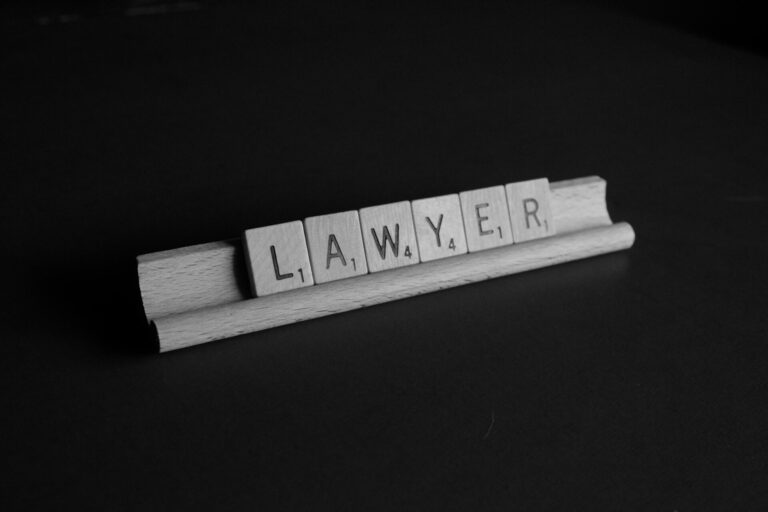Patent Vs. Trademark: Knowing the Difference
Did you know that there is a distinct difference between a patent and a trademark? While these terms are often used interchangeably, understanding the nuances between them is crucial, especially if you are an inventor or a business owner. Patents and trademarks are both forms of intellectual property rights, but they serve different purposes and offer unique benefits. So, if you want to safeguard your innovations or protect your brand, it is essential to grasp the disparities between these two legal concepts. Curious to know more? Let’s explore the world of patents and trademarks and discover why they matter in today’s competitive landscape.

Understanding Intellectual Property Rights
Understand the basics of intellectual property rights and how they can protect your creations. Intellectual property refers to the legal protection given to original creations of the mind, such as inventions, designs, literary and artistic works, and symbols. By understanding intellectual property rights, you can ensure that your ideas and creations are safeguarded from unauthorized use or infringement.
One of the key aspects of intellectual property rights is patents. Patents provide exclusive rights to inventors for their inventions, preventing others from using, making, or selling their inventions without permission. This gives inventors the opportunity to commercialize their inventions and reap the benefits of their hard work and innovation.
Trademarks, on the other hand, protect brands and distinguishing marks that businesses use to identify their goods or services. A trademark can be a word, logo, slogan, or even a combination of these, and it serves as a way for consumers to identify and differentiate products or services in the marketplace.
Key Differences Between Patents and Trademarks
Now let’s explore the key distinctions between patents and trademarks, which are crucial aspects of intellectual property rights.
- Legal Protection: Patents provide protection for inventions, while trademarks protect brands and logos.
- Patents safeguard new and useful inventions, preventing others from making, using, or selling them without permission.
- Trademarks, on the other hand, protect brand names, logos, and slogans, preventing others from using similar marks that may cause confusion in the marketplace.
- Duration of Protection: Patents and trademarks have different durations of protection.
- Patents typically last for a limited period, usually 20 years from the filing date, after which the invention enters the public domain.
- Trademarks, on the other hand, can be renewed indefinitely, as long as they are being used and maintained properly.
- Scope of Protection: The scope of protection provided by patents and trademarks also differs.
- Patents grant the exclusive right to make, use, and sell the patented invention, giving the patent holder a monopoly for a limited time.
- Trademarks, on the other hand, protect against the use of similar marks that may cause confusion, but do not prevent others from making or selling similar products or services under different names.
Understanding these key differences between patents and trademarks is essential for businesses and inventors seeking to protect their intellectual property.
Importance of Patents for Inventors
Securing a patent is crucial for inventors as it provides legal protection and exclusive rights over their inventions. As an inventor, obtaining a patent is essential because it gives you the legal authority to prevent others from making, using, or selling your invention without your permission. This exclusive right allows you to capitalize on your invention and ensures that others cannot profit from your hard work and ideas.
In addition to providing legal protection, patents also offer inventors a competitive advantage in the market. By obtaining a patent, you establish yourself as the sole owner of the invention, making it difficult for competitors to replicate or imitate your product. This exclusivity gives you the opportunity to establish a strong market presence and build a brand around your invention.
Furthermore, patents can also be valuable assets that can be licensed or sold to generate revenue. By licensing your patented invention to others, you can earn royalties and receive a steady stream of income. Alternatively, you can sell your patent outright, allowing you to capitalize on your invention and potentially gain a significant return on your investment.
Benefits of Trademarks for Businesses
Having a trademark offers businesses numerous benefits, including protecting their brand identity and distinguishing their products or services from competitors. Here are three key advantages that trademarks provide for businesses:
- Brand Recognition and Reputation: A trademark allows businesses to establish a unique brand identity in the marketplace. By registering a trademark, you can ensure that consumers associate your brand with quality and reliability. This recognition can lead to customer loyalty, repeat business, and positive word-of-mouth referrals.
- Legal Protection: Trademarks provide legal protection for your brand against infringement and unauthorized use. With a registered trademark, you have the exclusive right to use your brand name, logo, or slogan. This means that competitors cannot use similar marks that may confuse consumers or dilute your brand’s distinctiveness.
- Business Expansion and Licensing: A trademark can open doors for business expansion and licensing opportunities. A recognized and trusted brand can attract potential investors, partners, and licensees. Licensing your trademark allows you to generate additional revenue by granting others the right to use your brand in different markets or industries.
How to Protect Your Intellectual Property
To protect your intellectual property, it is important to understand the various methods available and take proactive steps to safeguard your creations. One of the most effective ways to protect your intellectual property is through patents. A patent gives you exclusive rights to your invention, preventing others from making, using, or selling it without your permission. To obtain a patent, you must file an application with the relevant patent office and meet certain requirements. It is crucial to conduct a thorough search beforehand to ensure your invention is unique and not already patented.
Another method of protecting your intellectual property is through trademarks. Trademarks are used to protect your brand, including names, logos, slogans, and even sounds. Registering a trademark provides you with exclusive rights to use and protect your brand identity, preventing others from using similar marks that could cause confusion among consumers.
Additionally, you can protect your intellectual property through copyrights. Copyrights are used to protect original works of authorship, such as books, music, artwork, and software. By obtaining a copyright, you have the exclusive right to reproduce, distribute, and display your work.
Frequently Asked Questions
Can a Patent and a Trademark Be Used Interchangeably to Protect Intellectual Property?
You can’t use a patent and a trademark interchangeably to protect intellectual property. A patent protects inventions or processes, while a trademark protects a brand’s name or logo. Each has its own specific purpose.
Can a Trademark Be Obtained for a Product That Is Not yet on the Market?
Yes, you can obtain a trademark for a product that is not yet on the market. For example, if you have a unique name or logo for your upcoming product, you can register it as a trademark to protect your brand.
Is It Possible to Obtain Both a Patent and a Trademark for the Same Invention?
Yes, you can obtain both a patent and a trademark for the same invention. A patent protects the invention itself, while a trademark protects the name, logo, or design associated with the invention.
What Is the Duration of Protection for a Patent Compared to a Trademark?
The duration of protection for a patent is typically 20 years from the filing date, while a trademark can be protected indefinitely as long as it is being used and renewed.
Are There Any Limitations on the Types of Inventions That Can Be Patented or the Types of Marks That Can Be Trademarked?
There are limitations on the types of inventions that can be patented and the types of marks that can be trademarked. Certain inventions may not meet the criteria for patentability, and certain marks may be deemed too generic or descriptive for trademark protection.






